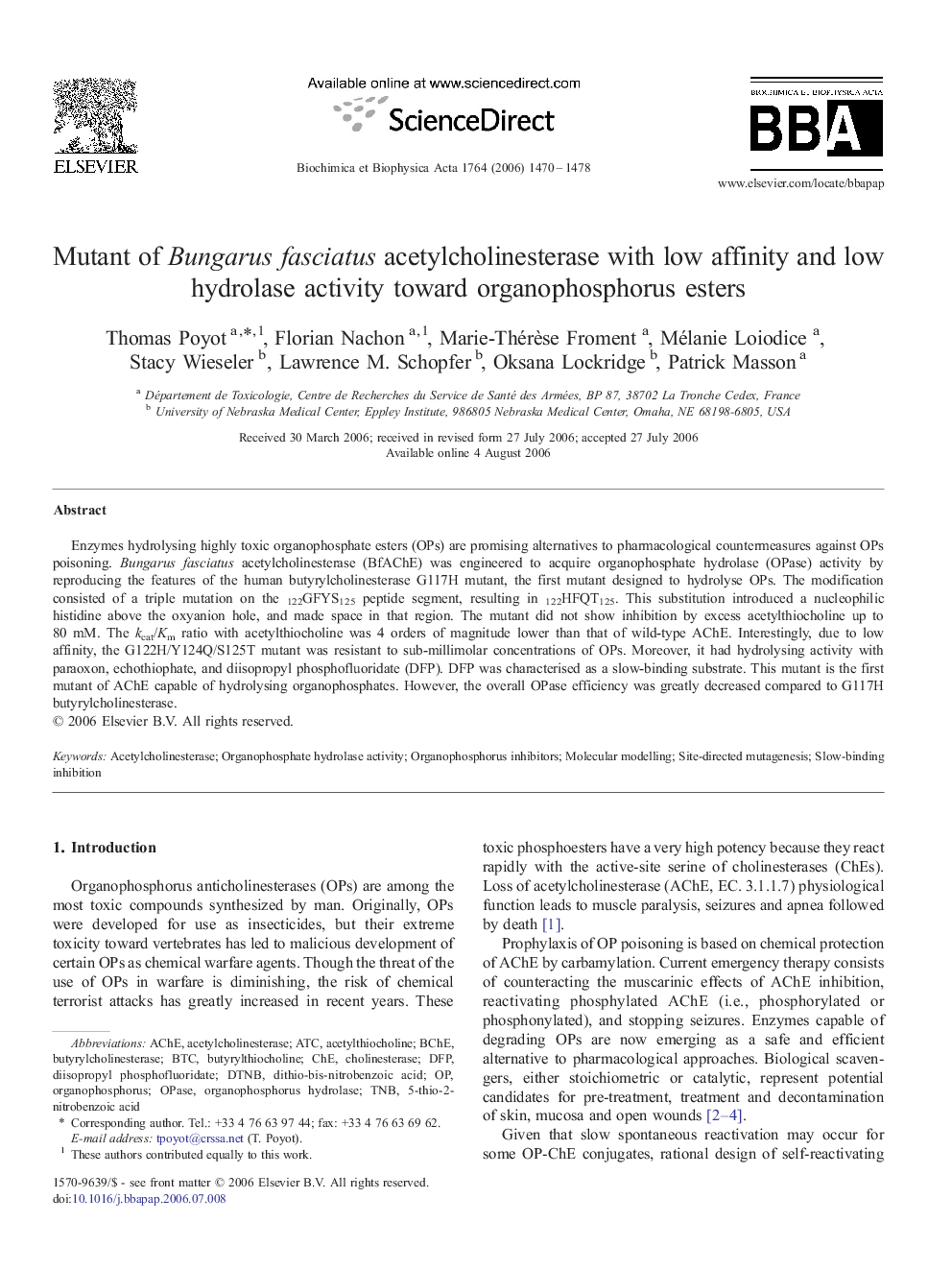| Article ID | Journal | Published Year | Pages | File Type |
|---|---|---|---|---|
| 1179479 | Biochimica et Biophysica Acta (BBA) - Proteins and Proteomics | 2006 | 9 Pages |
Enzymes hydrolysing highly toxic organophosphate esters (OPs) are promising alternatives to pharmacological countermeasures against OPs poisoning. Bungarus fasciatus acetylcholinesterase (BfAChE) was engineered to acquire organophosphate hydrolase (OPase) activity by reproducing the features of the human butyrylcholinesterase G117H mutant, the first mutant designed to hydrolyse OPs. The modification consisted of a triple mutation on the 122GFYS125 peptide segment, resulting in 122HFQT125. This substitution introduced a nucleophilic histidine above the oxyanion hole, and made space in that region. The mutant did not show inhibition by excess acetylthiocholine up to 80 mM. The kcat/Km ratio with acetylthiocholine was 4 orders of magnitude lower than that of wild-type AChE. Interestingly, due to low affinity, the G122H/Y124Q/S125T mutant was resistant to sub-millimolar concentrations of OPs. Moreover, it had hydrolysing activity with paraoxon, echothiophate, and diisopropyl phosphofluoridate (DFP). DFP was characterised as a slow-binding substrate. This mutant is the first mutant of AChE capable of hydrolysing organophosphates. However, the overall OPase efficiency was greatly decreased compared to G117H butyrylcholinesterase.
